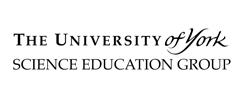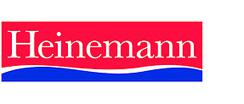- View more resources from this publisher
 University of York Science Education Group (UYSEG)
University of York Science Education Group (UYSEG)
Salters' Science Focus: Teachers' Guide 2
The Science Focus: the Salters’ Approach course provides a rich variety of different types of learning activities, which are described in sufficient detail to be taken and adapted into any Key Stage Three scheme of work. This guide covers Year Eight of the course, suggesting a scheme of work for each of nine units of study. Each unit includes an overview, identifying the content and learning activities, and a series of lesson plans, with suggestions for managing the activities and worksheets for students.
*Seeing the light - This physics unit begins and ends with a context of different types of light source and their uses. Students investigate scattering of light and the relationship between distance from a light source and intensity.
*Full of beans - The context of this biology unit is the problem of providing a year-round supply of fresh fruit and vegetables. The structure and function of flowers, seeds and fruit are studied, and the conditions needed for germination and growth are investigated.
*Fire: friend or foe? - This chemistry unit introduces ideas about the process of combustion, the dangers when fire gets out of control and methods for controlling and fighting fire. The unit provides a context to introduce word equations and ideas about chemical change.
*Child's play - The first part of this physics unit deals with energy transfer and storage. A final section deals with floating and sinking. They may be taught in either order, or one can be used without the other. Ideas about energy are introduced through the context of children’s toys which move.
*On the rocks - This earth science unit begins with study of minerals and how they are identified. Formation of igneous, sedimentary and metamorphic rocks is matched to their properties. Processes by which rocks are weathered and soils are produced are modelled. The unit concludes by considering some commercial uses of rocks and minerals.
*Body care - This human biology unit begins with revision of the names and location within the body of major organs and organ systems. Studies of the heart and lungs bring out the importance of a healthy life-style, exercise and hygiene, leading to questions about the effects of drug or alcohol use.
*Music and noise - Students make and try out their own musical instruments. A circus of activities introduces ideas about frequency, pitch and amplitude of vibrations. Transmission of sound is illustrated with a practical measurement of the speed of sound.
*Conditions for life - The production of crops from a market garden provides a context for a study of the conditions necessary for healthy growth. Text information is provided for a water quality stream survey, a transect of dunes near a shore, or a study of air quality based on surveys of lichens.
Wear and tear - Labels on clothing are used to introduce ideas about textile materials. Experiments investigate properties of different fabrics, strength and stretchability of threads.
Show health and safety information
Please be aware that resources have been published on the website in the form that they were originally supplied. This means that procedures reflect general practice and standards applicable at the time resources were produced and cannot be assumed to be acceptable today. Website users are fully responsible for ensuring that any activity, including practical work, which they carry out is in accordance with current regulations related to health and safety and that an appropriate risk assessment has been carried out.
Downloads
-
Introduction 2.64 MB
-
Seeing the light (activity sheet) 206.88 KB
-
Full of beans (teachers' notes) 1.86 MB
-
Full of beans (activity sheet) 329.57 KB
-
Fire: friend or foe? (activity sheet) 105.57 KB
-
Child's play (teachers' notes) 1.31 MB
-
Child's play (activity sheet) 1.17 MB
-
On the rocks (teachers' notes) 2.45 MB
-
On the rocks (activity sheet) 299.19 KB
-
Body care (teachers' notes) 2.28 MB
-
Body care (activity sheet) 611.46 KB
-
Conditions for life (activity sheet) 87.14 KB
-
Wear and tear (teachers' notes) 1.61 MB
-
Wear and tear (activity sheet) 346.83 KB





